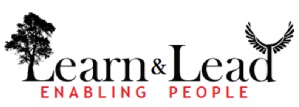Web 2.0 in Learning
Web 2.0 will be the killer buzzword for the year 2008. Everyone will want to use the technology for learning and training. Bersin report for 2008 talks about it, Brandon Hall has announced new categories of awards, and most bloggers are talking about it. I believe 2008 will continue to be the year of discovery and experimentation with Web 2.0. Web 2.0 techniques will not yet be used in formal training, but each company will have an initiative around it.
In my view, corporate intranets and extranets have been around for years and have been attempting to do what Web 2.0 is expected to do. Are Web 2.0 techniques different from corporate intranets? Will employees feel more compelled to use these as compared to corporate intranets? Will companies provide the Internet freedom culture on their corporate Web 2.0 environments? Will companies adopt open sites like Facebook, YouTube, SlideShare for allowing employees to post and share corporate content on the Internet? Or will these sites provide secure environments (inside firewalls or hosted) to the corporate world? Do we have a new business model here? Or will Web 2.0’s usage be limited to building communities by product companies?
Training managers will still be required to measure success in training days/hours per person, which will make Web 2.0 in formal training and learning environment extremely difficult to adapt for formal training. What is required is another path breaking research that can provide some return on investment figures of using Web 2.0 in learning and training. I expect more research towards this in year 2008 rather than training managers embracing Web 2.0 as a mode of formal learning.
Virtual Environments
Virtual environments will find increasing use in building communities and new product launches by technology customers. Will Second Life be used for actual training in the corporate world? I don’t believe 2008 will be the year for mass adoption of Second Life in training. There will be questions of security, access through corporate networks, and of course tracking progress in Second Life. However asynchronous virtual environments will find their way in training in a limited way. Most of these will be showcase training module as opposed to bulk of training being developed as virtual environment. There will be a conflict between rapid development and real-life imitating virtual environment training. I am also very impressed with The 3Di-Web Singularity is Near by Tony O’Driscoll. This will certainly change the way learning happens. I am not sure about its adoption in formal “training” in the next year or two.
Form Factors
The 2000-01 downturn saw a trend towards formalizing elearning as a mode of learning. There were mechanisms to justify the return on investment on elearning. As the economy improved, we moved to blended learning. Even as elearning increased, most industry reports still indicated that instructor led training led as the preferred mode of learning. In the last few years, we as a training and content development organization have seen an increase in projects developing instructor led training material. Now with the US economy showing signs of slowing down (no one actually conclusively knows which way the US economy will actually go but most reports are tilting towards “caution”, “slowing down”, “start of recession” etc.), my guess is that we will once again see an increase of elearning development.
What constitutes elearning has also changed. Most instructor led training now a days has an element of ‘e’ in them, whether it is in the form of demos or virtual images. In 2008, we should start to dump the ‘e’ and start classifying training as synchronous training and asynchronous training.
The training in 2008 will tend towards online synchronous training. We will see more of “VILT”, “online sessions”, “online conferencing” etc. The technology now has matured; online conferencing tools are easily available without significant investment option to be made by organizations.
Rapid Development and Development Models
Rapid elearning will continue to be a buzz word. PowerPoint will reclaim its position as a rapid elearning development tool. Sites like SlideShare will help PowerPoint in this endeavor.
Of course, being the buzzword, along with “collaborative development”, “self organizing groups”, “user generated content”, training managers will have harder time convincing management to spend training dollars in an already weakening economy. Most management will want to know what value instructional designers add when all content is driven by subject matter experts in user generated content mode. Instructional Designers will be required to acquire new skills for content development and interacting with SME and reinvent themselves. The development models will change to factor in collaborative development and rapid development needs.
Summary
In summary, we will see a lot more talk about Web 2.0 in learning and training. However 2008 may not be the year of adoption of Web 2.0 technologies in “formal training”. Rapid development will be key and instructional designers will need to reinvent themselves and development models will evolve.
Would love to hear what you are seeing as trends within your companies or you’re your customers are implementing. Share your practical experiences.



Hi Manish,
Your posts are really thought provoking. Thanks for keeping me in loop.
Here are my thoughts on the possible trends of web 2.0 and elearning in 2008. I believe we will see more of integration of blogs, wikis and other social software for creating learning content. These can also emerge as new free and social learning communities (may be ad-hoc). Even podcasting may see increased use in the field of education.
I believe Web 2.0 provide us with tools to contribute and share. Apart from the real requirements, one of the biggest reasons why e-learning industry is adopting web 2.0 is to balance out the competition and leverage the wow factor. As far as technology is concern, we could definitely utilize web 2.0 however in my opinion, e-learning softwares would be careful to grant control to every user. Blogs and chats could be expert blogs and chats. Wikis and discussion boards will be moderated. I jumped to a little low level but this is what I believe would be the trend for the next 2-5 years
Training professionals have been talking about Web 2.0 and its possible impact on the eLearning scenario for quite some time now. But issues like security, tracking and return on investment need to be addressed before Web 2.0 can be fully utilized in the elarning scenario. I personally think that the transition to Web 2.0 will be gradual….as and when the developers find answers to the issues; the concepts of Web 2.0 will be applied in elearning.
You can already see the shift in the methods of delivery. Podcasts, vILTs, and vLabs are slowly moving into the “traditional methods of delivery” category. Last year saw a big leap in podcasts as a method of delivery. For the sales people, using ipods or iphones to listen to podcasts on subjects like “how to handle customer objections?”on the way to a customer meeting has become the “in” thing. And they are loving it!
I still have to brush up on web 2.0 and its implications. But what I do see is leaning towards low maintenance training. In 2005, I was with a UK based company and the emphasis there was on ‘bespoke’ content, lots of bells and whistles and interactivity in flash. Since then, with the realisation of the dynamic nature of the content, simplicity of maintenance has become key. I agree with you that powerpoint is going to gain much more power as a training tool. In fact, when working in the training administration section at accenture, I saw most training created by leaders in powerpoint presentations.
Ritu Mahajan
Hi Manish,
Very interesting analysis and take on the trends for this year. The way the industry is moving, i think there will be increasing focus on collaboration tools as well as security mechanisms. Yes, e-presentations and extensive use of visuals will be key in trainings and info sharing.
There has already been a shift from ‘text-heavy’ to ‘media/visual-focused’ content. And now, the ‘i’ factor is fast catching pace!
Keep sharing…your posts are quite thought provoking!
Until the time I read about Web 2.0 on your blog, I probably heard of it only once before, in one of our meetings with an Indian (Government) client – National Informatics Center (NIC).
Last year, we did a detailed Training Need Analysis (TNA) for NIC and recommended solutions that were more e-based and collaborative in nature. However, the irony is that the organization still wants to continue with a lot of classroom-based training (which in their perspective is still the most effective medium of training) with addition of synchronous training through Interwise sessions.
In adopting a new technology as Web 2.0, Security, return on investment, etc. are factors that will still be a question mark for most organizations. I think it would take time for this trend to catch on and being implemented but it will definetely make a strong head start this year.
Sonali Malik
Nice post Manish! It is not easy to visualize how organizations will adopt elearning 2.0/web 2.0 and link it to RoI. It will need specialized tools and methodologies for sure particularly in the creation and management of personal learning environments.
Viplav Baxi
VP Operations and Innovations
Servitium
http://learnos.wordpress.com